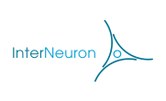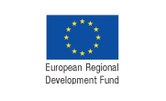Wulfram Gerstner, EPFL Lausanne: Neo-Hebbian three-factor rules of synaptic plasticity: surprise, surprise!
| When |
Jan 26, 2021
from 05:15 PM to 06:00 PM |
|---|---|
| Where | Zoom Meeting. Meeting ID and password will be sent with e-mail invitation. You can also contact Fiona Siegfried for Meeting ID and password. |
| Contact Name | Fiona Siegfried |
| Add event to calendar |
|
Abstract
Hebbbian learning has been the dominant paradigm of synaptic plasticity. Hebbian learning works with two factors, i.e., a combination of presynaptic spike arrivals with postsynaptic activation. In a more general theory, Hebbian learning just sets an eligibility trace and marks the synapse as being ready for change, but a third factor is needed to turn the potential plasticity into an actual change of synaptic weight. In this talk I discuss experimental and theoretical evidence supporting such a framework: In biology, the third factor could be provided by broadly projecting neuromodulators. In models, the third factor could be not just moments of reward, but also moments of surprise. The last part of my talk will focus on our recent work around surprise.
Literature
[1] Eligibility traces and plasticity on behavioral time scales: experimental support of neoHebbian three-factor learning rules. W Gerstner, M Lehmann, V Liakoni, D Corneil, J Brea.
Frontiers in neural circuits 12, 53 (2018)
[2]One-shot learning and behavioral eligibility traces in sequential decision making. MP Lehmann, HA Xu, V Liakoni, MH Herzog, W Gerstner, K Preuschoff.
Elife 8, e47463 (2019)
[3] An Approximate Bayesian Approach to Surprise-Based Learning. V Liakoni, A Modirshanechi, W Gerstner, J Brea.
To appear in Neural Computation (2021)
arXiv preprint arXiv:1907.02936
[4] Novelty is not surprise. H.A. Xu, A. Modirshanechi, M.P. Lehmann, W. Gerstner, M.H. Herzog (2020).
bioRxiv doi: https://doi.org/10.1101/2020.09.24.311084





